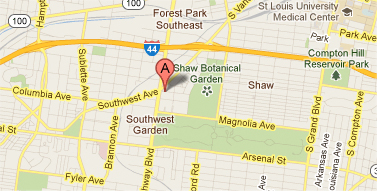©2025 Operation Brightside Inc. | All marks are trademarks of their respective owners.
We need your help.
Your donations allow us to do what we do. Please help!
Contact us to learn about our
St. Louis volunteer opportunities.
Get our e-newsletter.
Happy Pollinator Week!
Happy Pollinator Week!
In honor of Pollinator Week, here are nine fun facts about these important creatures.
- An estimated one-third of all foods and beverages are delivered by pollinators. In the U.S., pollination produces nearly $20 billion worth of products annually.
- Without pollinators, we would lose many goods such as blueberries, apples, coffee, almonds and chocolate.
- About 75% of all flowering plants rely on animal pollinators. Over 200,000 species of animals serve as pollinators, approximately 1,000 of which are species of hummingbirds, bats, and small mammals. The rest are insects such as beetles, bees, ants, wasps, butterflies and moths.
- Most bee species don’t sting. Although all female bees are physically capable of stinging, most bee species native to the U.S. are “solitary bees,” meaning they don’t live in colonies and don’t sting unless they are physically threatened or injured. Only honey bees are defensive and may chase someone who disturbs their hive.
- Many animals serve as pollinators. Lemurs are the world’s largest pollinator while honey possums pollinate Australian banksia and eucalyptus flowers. Other surprising pollinators include geckos, swift parrots, rainbow lorikeet (a species of parrot) and the Cape grey mongoose.
- Beetles are responsible for pollinating 88% of the world’s 240,000 flowering plants. Beetles also make up 25% of all known animal life-forms, with approximately 400,000 unique species.
- In 2015, researchers discovered the first known underwater pollinator. A species of Caribbean seagrass, Thalassia testudinum or turtlegrass, relies on zooplankton and other bottom-dwelling invertebrates to pollinate its flowers.
- A small percentage of North American pollinators migrate long distances. Some of these pollinators include lesser long-nosed bats, rufous hummingbirds, ruby-throated hummingbirds, and monarch butterflies.
- More than 40% of insect pollinators are highly threatened worldwide. By installing native plants in your yard or community spaces, you can help save our native pollinator populations.
Visit the Brightside Demonstration Garden to learn how we’ve welcomed pollinators and native plants into our space. Don’t forget to take advantage of our Neighbors Naturescaping small grant program to incorporate an attractive pollinator garden to a public space in St. Louis City!




Leave a Reply